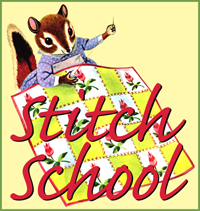I’ve been seeing another rickrack technique lately that I find fascinating - the combination of rickrack and crochet. Apparently this was very popular in the late 1800s to early 1900s when it was used to trim handkerchiefs, lingerie, pillowcases, towel ends, and clothing.
Here are some examples of what I’m talking about:

variegated pink, blue, and white crochet encasing white rick rack used to trim a baby pillowcase

golden yellow braid with white crochet - I purchased this as is and I assume it was meant to be sewn onto fabric as a trim.
Unfortunately, I never learned how to crochet so will have to wait until I learn to try this out for myself. When my grandmother offered to teach me I thought crochet and knitting were too “old-lady”. If I’d only known how hip they would be now! I hear there’s a new yarn shop in town, and I’m going to check out their class schedule. Maybe it’s not too late after all!
This is another cool use of rickrack—to simulate ruffles on a dancer’s skirt. These are from a square dance-themed tablecloth with motifs in each corner.




And another easy idea - sewing one braid atop another:




















